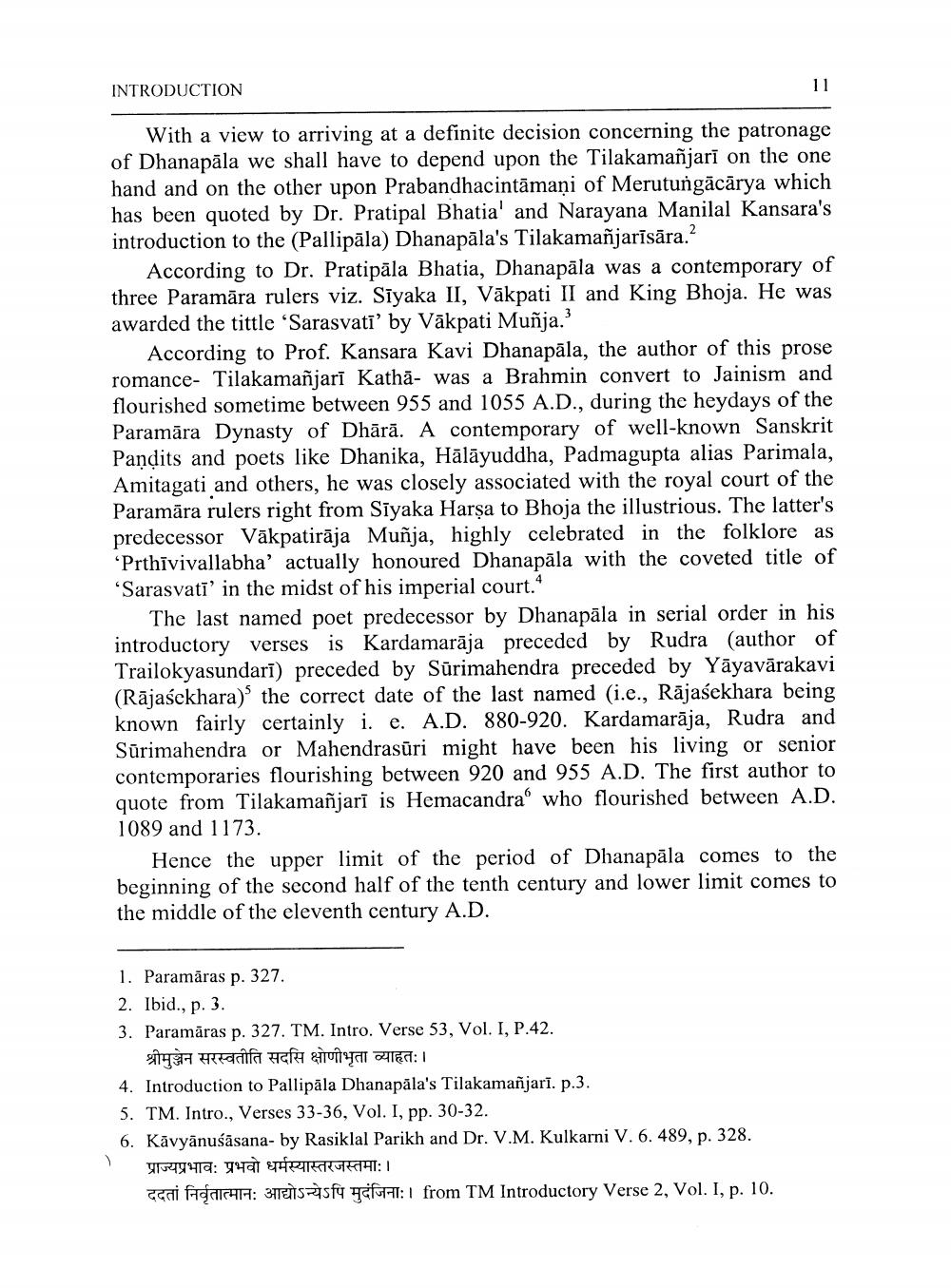________________
INTRODUCTION
With a view to arriving at a definite decision concerning the patronage of Dhanapāla we shall have to depend upon the Tilakamañjarī on the one hand and on the other upon Prabandhacintāmaņi of Merutungācārya which has been quoted by Dr. Pratipal Bhatia' and Narayana Manilal Kansara's introduction to the (Pallipāla) Dhanapāla's Tilakamañjarīsāra.?
According to Dr. Pratipāla Bhatia, Dhanapāla was a contemporary of three Paramāra rulers viz. Siyaka II, Vākpati II and King Bhoja. He was awarded the tittle 'Sarasvati' by Vākpati Muñja."
According to Prof. Kansara Kavi Dhanapāla, the author of this prose romance- Tilakamañjarī Kathā- was a Brahmin convert to Jainism and flourished sometime between 955 and 1055 A.D., during the heydays of the Paramāra Dynasty of Dhārā. A contemporary of well-known Sanskrit Pandits and poets like Dhanika, Hālāyuddha, Padmagupta alias Parimala, Amitagati and others, he was closely associated with the royal court of the Paramāra rulers right from Sīyaka Harsa to Bhoja the illustrious. The latter's predecessor Vākpatirāja Muñja, highly celebrated in the folklore as 'Prthīvivallabha' actually honoured Dhanapāla with the coveted title of 'Sarasvatī' in the midst of his imperial court.
The last named poet predecessor by Dhanapāla in serial order in his introductory verses is Kardamarāja preceded by Rudra (author of Trailokyasundarī) preceded by Sūrimahendra preceded by Yāyavārakavi (Rājasekhara) the correct date of the last named (i.e., Rājasekhara being known fairly certainly i. e. A.D. 880-920. Kardamarāja, Rudra and Sūrimahendra or Mahendrasūri might have been his living or senior contemporaries flourishing between 920 and 955 A.D. The first author to quote from Tilakamañjarī is Hemacandra' who flourished between A.D. 1089 and 1173.
Hence the upper limit of the period of Dhanapāla comes to the beginning of the second half of the tenth century and lower limit comes to the middle of the eleventh century A.D.
1. Paramāras p. 327. 2. Ibid., p. 3. 3. Paramāras p. 327. TM. Intro. Verse 53, Vol. I, P.42.
श्रीमुञ्जेन सरस्वतीति सदसि क्षोणीभृता व्याहृतः। 4. Introduction to Pallipāla Dhanapāla's Tilakamañjarī. p.3. 5. TM. Intro., Verses 33-36, Vol. I, pp. 30-32. 6. Kāvyānuśāsana- by Rasiklal Parikh and Dr. V.M. Kulkarni V. 6. 489, p. 328.
प्राज्यप्रभावः प्रभवो धर्मस्यास्तरजस्तमाः। Gai Sacha: 3TENSIS for: 1 from TM Introductory Verse 2, Vol. I, p. 10.




